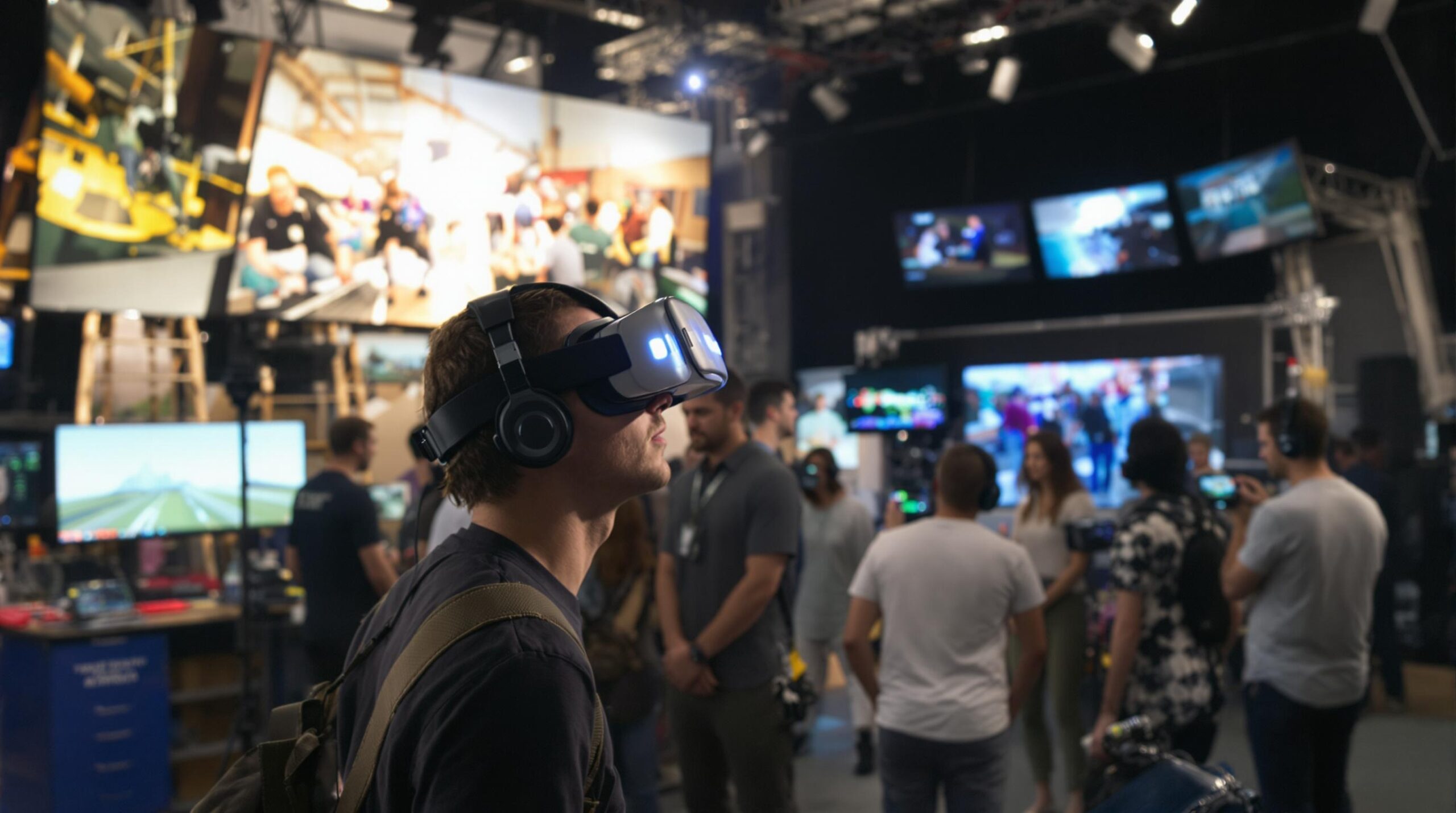Virtual Reality (VR) technology is revolutionizing numerous industries, and the film industry is no exception. Filmmakers embrace VR to enhance their production processes and enrich the viewer experience. This technological innovation is changing how movies are made and how audiences consume entertainment.
The Evolution of Virtual Reality in Cinema
VR’s roots trace back to the early 20th century with 3D movies. However, VR technology has vastly evolved since then. Today, filmmakers can create immersive experiences that transcend traditional storytelling methods. The advancements in VR technology have empowered directors and producers to explore new creative realms.
With VR, filmmakers can visualize complex scenes before filming. It allows them to navigate and manipulate virtual environments, making pre-production more efficient. Directors can scout locations, experiment with camera angles, and plan special effects virtually. This process saves significant time and resources while ensuring a seamless production workflow.
Transforming the Production Process
VR technology is a powerful tool in the filmmaking process. It offers innovative ways to design and execute scenes effectively. For instance, VR enables set designers to build virtual sets and test designs before physical construction. This reduces the likelihood of cost overruns and set redesigns, streamlining budget allocations.
Furthermore, VR facilitates collaborative efforts among the production team. Directors, cinematographers, and set designers can work together in virtual environments despite being in remote locations. This collaborative approach enhances creativity and fosters effective communication throughout the production process. The integration of VR into filmmaking has made it possible to overcome geographical limitations, facilitating global collaboration.
Enhancing Visual Effects and CGI
Virtual reality has also significantly contributed to visual effects and computer-generated imagery (CGI). VR tools allow filmmakers to create life-like simulations and realistic CGI characters seamlessly. Directors can immerse themselves within a scene, enabling them to envision and refine visual effects more accurately.
By using VR headsets, filmmakers can place themselves within digital environments. This immersion allows them to interact with CGI elements and make real-time adjustments. Such a hands-on approach has revolutionized visual effects, producing more authentic and impressive outcomes. The integration of VR into CGI production workflows has elevated the quality of cinematic visuals.
Redefining Audience Engagement
Virtual reality is not just transforming production; it is revolutionizing how audiences engage with films. VR offers viewers unprecedented immersion, creating a dynamic storytelling experience. Traditional passive viewing is being replaced by active participation, where audiences become part of the narrative.
VR films allow audiences to explore 360-degree environments, offering a sense of presence rarely experienced in traditional cinema. This interactivity enables viewers to shape their experiences, making each viewing unique. For instance, VR horror films can immerse viewers in spine-chilling environments, enhancing the sense of dread and suspense.
Additionally, VR can reinvent classic cinema experiences, offering fresh perspectives on beloved stories. Audiences can relive iconic scenes from a first-person point of view, deepening their connection with the narrative. It offers filmmakers an opportunity to reintroduce classic films to new generations in innovative ways.
Challenges and Considerations
Despite its potential, VR in film production encounters various challenges. The technology requires substantial investment, which may not be feasible for all production companies. Moreover, VR gear for audiences can be expensive, limiting accessibility and widespread adoption.
Technical challenges also arise when integrating VR seamlessly into film production. Filmmakers must ensure cutting-edge technology does not overshadow storytelling. Balancing innovation with narrative integrity is crucial to maintaining audience engagement and storytelling quality.
Ethical considerations are also significant when creating immersive experiences. Filmmakers must consider viewers’ comfort and potential sensory overload in deeply immersive environments. As VR technology evolves, filmmakers must prioritize ethical storytelling practices to ensure responsible usage.
Future Prospects of VR in Cinema
The future of VR in the film industry is promising. As technology continues to advance, filmmakers will have access to broader possibilities. Emerging innovations, like haptic feedback, can further enhance viewer experiences by enabling tactile interactions within virtual spaces.
Moreover, with 5G networks becoming mainstream, VR streaming will become more accessible and seamless. This advancement will make VR films more readily available to audiences worldwide, encouraging widespread adoption. As VR becomes more integrated into everyday life, its potential to reshape the film industry will continue to grow.
Education and training for filmmakers in VR technology will become increasingly important. As the demand for VR content rises, professionals well-versed in VR tools will be essential. Film schools are starting to incorporate VR curricula, equipping students with the necessary skills for the evolving industry.
Conclusion
Virtual Reality is transforming the film industry, redefining movie production and the viewer experience. It offers filmmakers innovative tools to streamline production processes and enhance visual effects. For audiences, VR presents an unprecedented level of immersion, adding a new dimension to storytelling.
While challenges exist, VR’s potential in cinema is immense. As technology and accessibility improve, VR will become a staple in production and consumption. The fusion of VR and cinema promises an exciting future where storytelling knows no bounds. The next era of filmmaking is here, and VR is at the forefront of this cinematic revolution.


